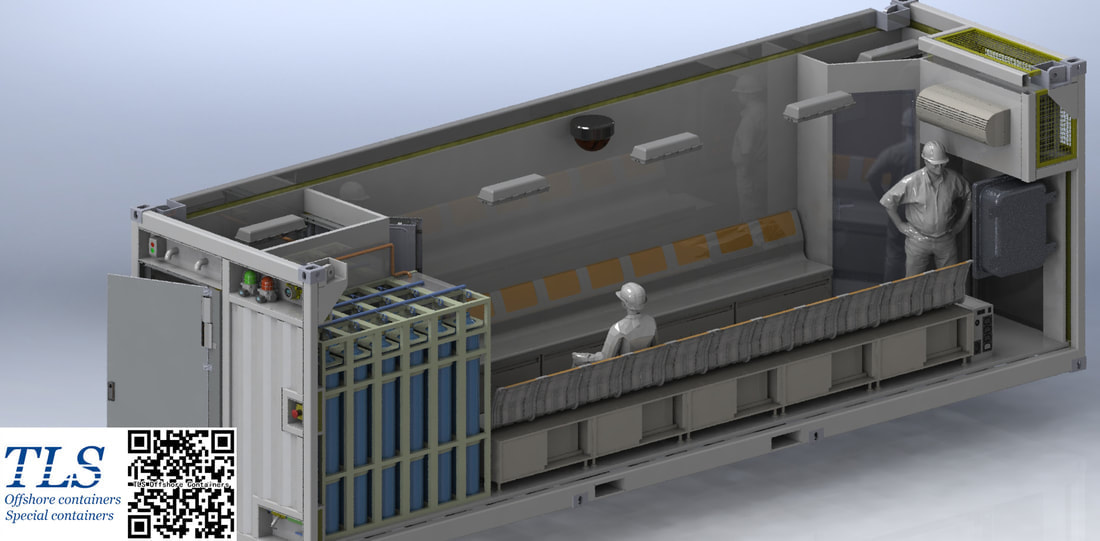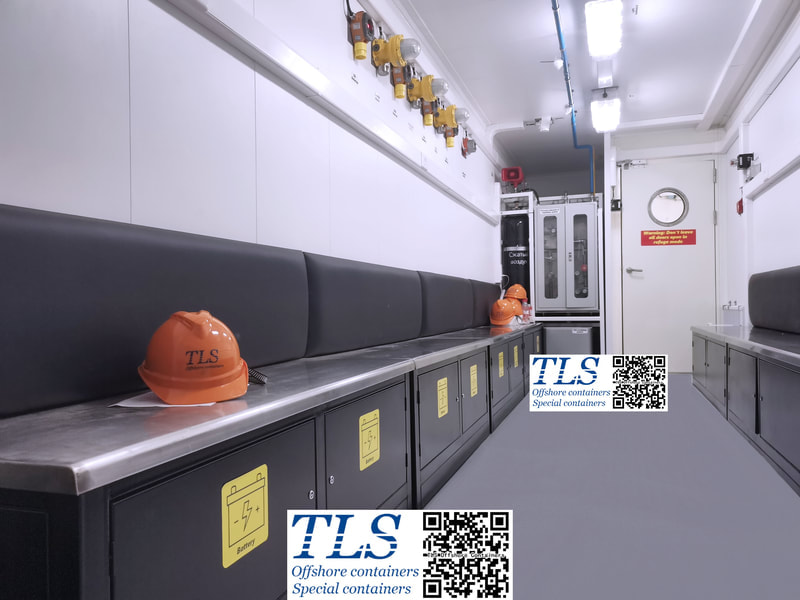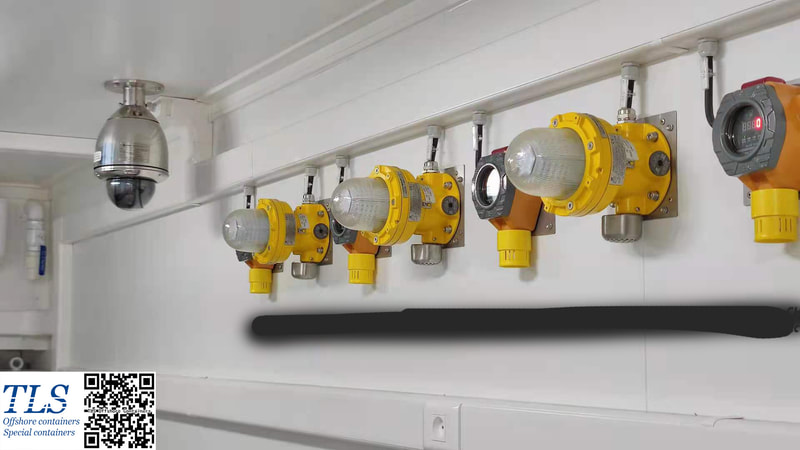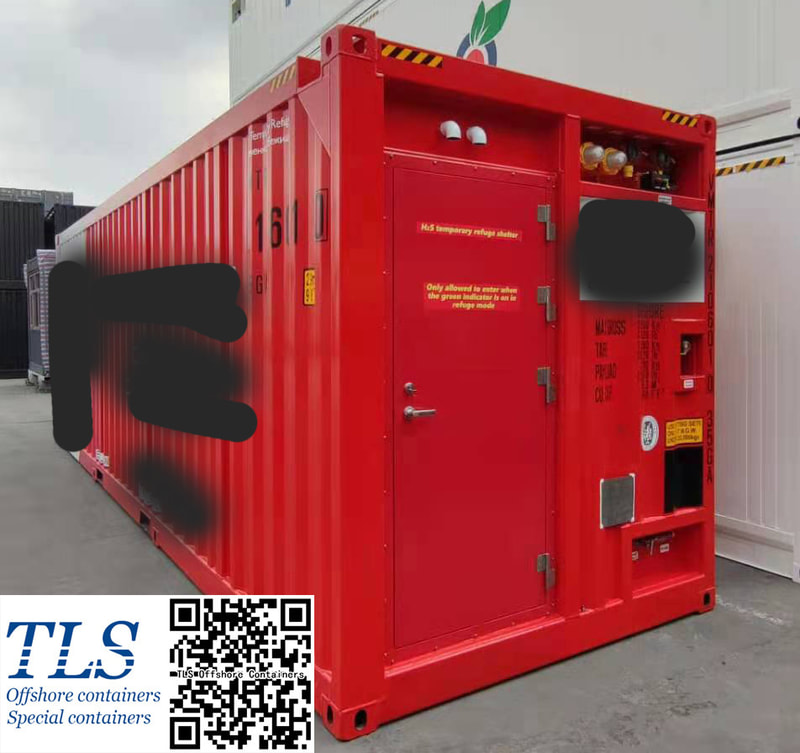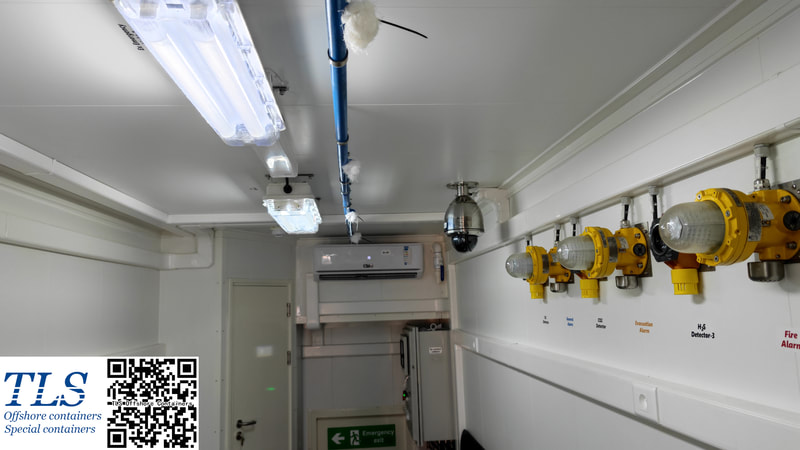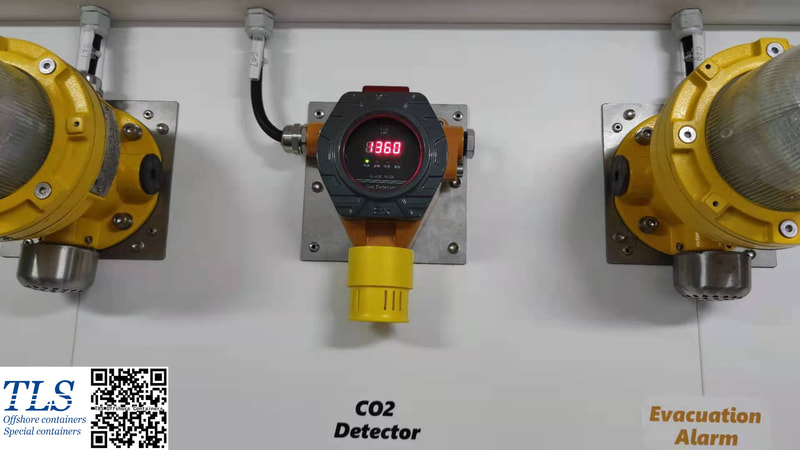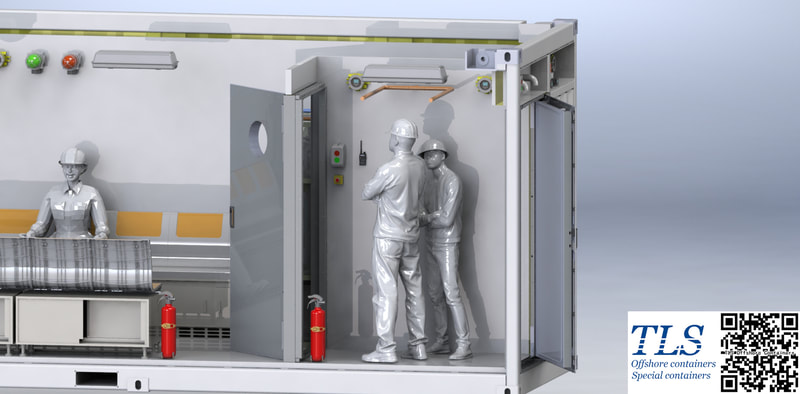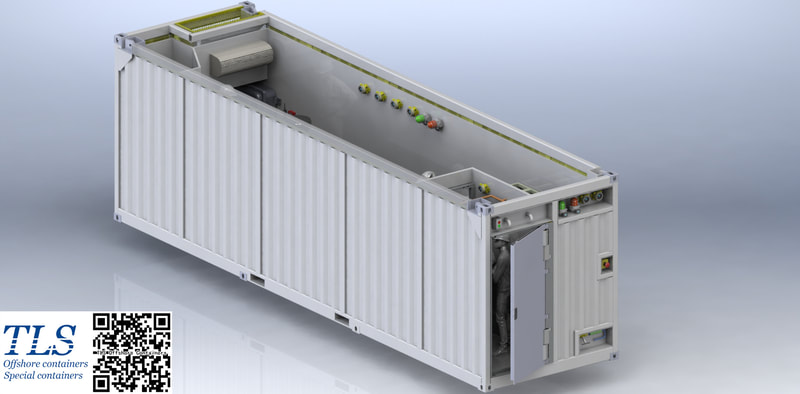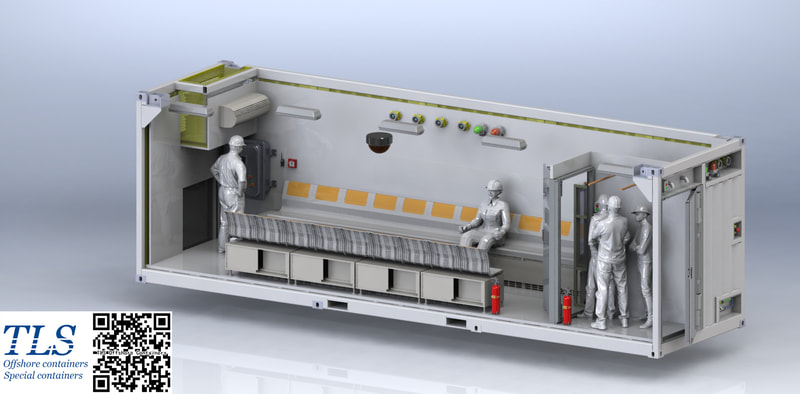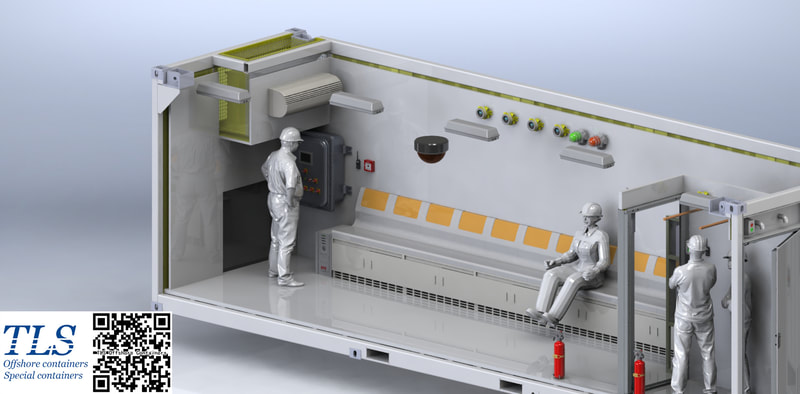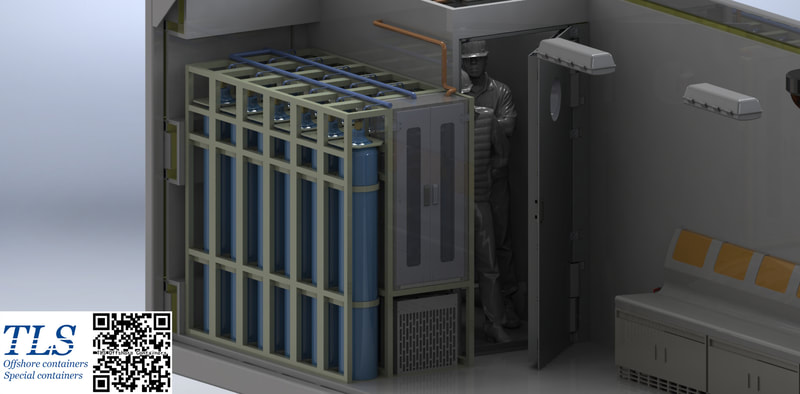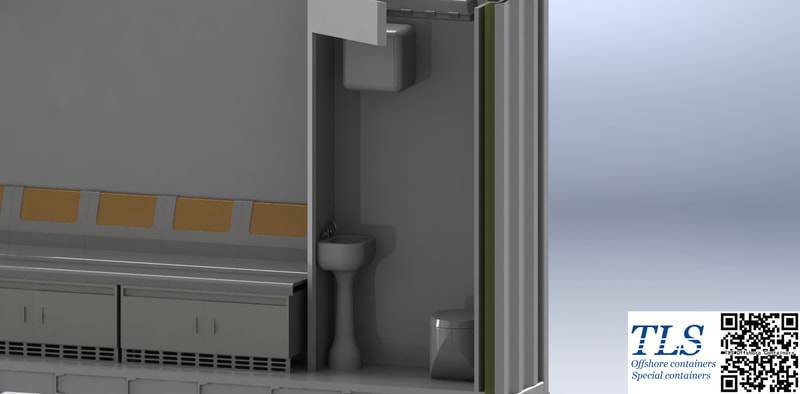|
Temporary Refuge (TR) shelters are an essential safety feature in hazardous environments such as offshore oil rigs, chemical processing plants, and industrial manufacturers. TR shelters provide a safe and secure area for personnel during emergency situations such as gas releases, explosions, or fires. These shelters are designed to keep personnel safe from relevant hazards during major incidents, and are equipped with communications, monitoring and control equipment to ensure personal safety and facilitate safe and complete evacuation if necessary. One of the critical components of a TR shelter is the independent breathing system. In the event of a hazardous gas release or other emergency, the independent breathing system ensures that the air inside the shelter remains breathable and free from contaminants. This is achieved through a supply of clean air, which is circulated through the shelter using a ventilation system designed to maintain positive pressure inside the shelter. The independent breathing system typically includes air filtration systems, which remove impurities and contaminants from the air, ensuring that the air inside the shelter is of high quality. The positive pressure system helps to prevent the ingress of harmful gases and contaminants into the shelter, ensuring that the breathable air inside is not compromised. TR shelters are usually externally installed and have a supply duct to the TR area interior. The control panel is installed internally within the TR area and is designed as a fail-safe system, meaning that clean air will leak out of the shelter in the event of damage or an air seal leak. TR shelters are not meant to be a permanent solution, but rather a temporary refuge until it is safe for personnel to evacuate or the emergency has been resolved. The shelter should only be occupied for a limited time, and only when the conditions outside the shelter are deemed to be hazardous. TLS offshore containers are an excellent complement to TR shelters. These containers are designed to provide safe and secure storage of hazardous materials, equipment, and tools in offshore environments. TLS offshore containers are designed to withstand the harsh marine environment and can be used to store a range of equipment and materials, including hazardous chemicals, waste materials, and firefighting equipment. TLS offshore containers are also designed to meet the highest safety standards, including DNV 2.7-1 and EN12079. These standards ensure that the containers are built to withstand extreme weather conditions and the rough sea, ensuring that the materials and equipment inside remain safe and secure at all times. In conclusion, TR shelters and TLS offshore containers are essential safety features for workers in hazardous environments. The independent breathing system in TR shelters ensures that the air inside remains breathable and free from contaminants, while TLS offshore containers provide safe and secure storage for hazardous materials, equipment, and tools. These safety features are critical to the health and safety of workers in hazardous environments and are essential components of any safety program. FEA helps improve the design and accuracy of TLS offshore containers by simulating hazardous or destructive load conditions and failure modes, allowing engineers to understand the physical response of the system. Here are some of the advantages that FEA brings
In summary, Finite Element Analysis (FEA) plays a crucial role in improving the design and accuracy of TLS temporary refuge (TR) shelter and blast resistant unit by simulating hazardous load conditions and failure modes. Written by OliverThe FEA can help all these professionals in the development of parts and products. It will help them to make decisions at all stages of product development and answer questions such as:
By using FEA from the start of the development process, you save time and money because FEA allows you to find the right solutions at the product design stage. In today's industries, FEA is now one of the key activities in developing efficient products. Nobody questions the usefulness and power of such a tool. In the design of shelters, explosion-proof containers, if they are designed exactly in accordance with the content of the standard, the design of the shell often does not meet the requirements of the type test. Experienced design engineers, on the other hand, design based on practical experience, and although the designed explosion-proof housing can meet the type test requirements, the weight of the housing is generally heavy and the material and transport costs are high. The use of finite element analysis for design, can effectively shorten the design cycle, while reducing material costs, perfect to meet the application standards, so that new products can be quickly marketed. TLS will take full advantage of the FEA to design and manufacture shelters and blast resistant containers to suit each customer's individual requirements Written by Oliver With the gradual deepening of the development and utilization of oil and gas resources by human beings, oil and gas exploration and development have shifted from the shallow continental shelf to the deep sea, drilling engineering operations must also be carried out in the ocean away from the continental shelf.
In the event of a fire, explosion, leakage or other critical situation on the platform, the personnel on board can escape to the temporary refuge shelter, guarantee the life safety of the personnel in the temporary shelter within a certain period, and organize the person discuss the escape strategy, and gain time to be rescued. Features of temporary refuge shelter provided by TLS:
Offshore oil and gas development is recognized as a high-risk industry in the world. Once an accident occurs, it may cause casualties. Therefore, it is particularly important to ensure the safety of personnel in the process of offshore oil and gas development. A temporary refuge shelter (TR) is a place for personnel gathering and protection to evacuate, take emergency response measures and wait for rescue in case of fire, explosion and other accidents. The function of temporary shelter (TR) in case of disaster
H2S temporary refuge shelter for 20 person for two hours, 20pax TGR:
TLS offshore containers Int. offers an extensive range of containerized blast resistant modular / shelter that are cost effective and flexible. The containerized blast resistant shelters enhance worker safety within hazardous environments. These buildings provide a safe zone for employees and equipment within the process areas in the event of leaked vapor ignition or explosive risk. Our blast resistant containers are available as standard 20ft, 30ft, 40ft or customized dimension. Those units can be joined together to form larger blast resistant modules. Blast resistant modules are fitted with split type air conditioning. They have integrated ventilation shut down systems with an optional gas detection system. They also have the option of manual, security controlled or fully automated door system to ensure the appropriate solution. Please contact us for more information [email protected] |
Archives
July 2024
Categories
All
|
- Home
-
Containerised solutions
- Intelligent pressurised container | MUD logging cabin
- Battery energy storage system (BESS) container
- Flexible grid tied battery storage system
- Laboratory container | workshop container | Equipment containers
- Temporary refuge shelter | Toxic gas refuge | Safe haven
- Offshore accommodation cabin | office container
- Reefer container | Refrigerated container
- Intelligent waste water treatment container
- Fresh water generator container
- Cargo Containers
- Product photos & videos
- News & Blogs
- Contact us
|
Featured products
Intelligent pressurised container Temporary refuge (TR) shelter, toxic gas refuge (TGR) Battery energy storage system (BESS) container Containerised waste water treatment plant Fresh water generator container Reefer container Laboratory container, Workshop container Accommodation container Offshore closed container |
All Rights Reserved 2020 © TLS Offshore Containers / TLS Energy
|

